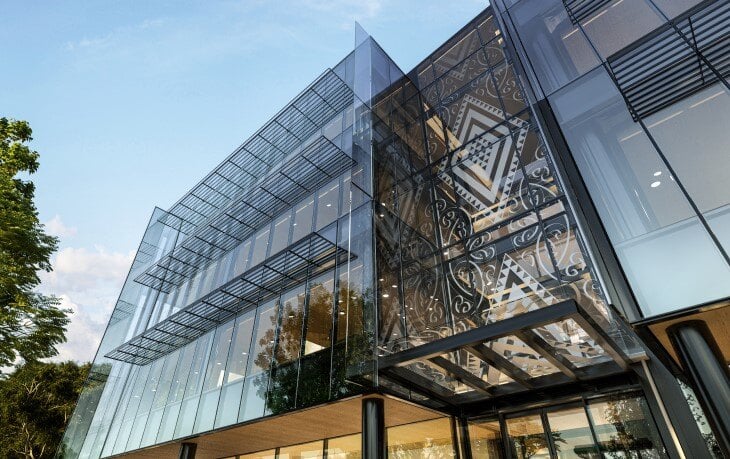The one year extension to the Warmer Kiwi Homes programme announced in today’s Budget has been called ‘literally the least the government could do’ by the Green Building Council.
See our full breakdown of the details below
Economic outlook
Net debt figures are projected to hit 19.9% in 2024, dropping to 15% by 2026. Some of the lowest in the world.
The economic forecast sets out that NZ is resilient and unemployment low. The key risk is inflation and cost of living pressures for kiwis. CPI is forecast to average a large 6.7% in 2022 and 5.2% in 2023.
House prices
Stricter loan to value ratios and consumer credit laws came into effect last year. Mortgage rates have risen significant. House prices have fallen as a result with REINZ house price index falling 4.7% between November 21 and March 2022.
This cooling is expected to continue as rising interest rates and falling real incomes weight on demand while significant residual investment boosts supply of housing. House prices are forecast to decline 5% in the year ending December 2022 and a further 1.5% in 2023. Controlling for CPI inflation, real house prices are forecast to fall 17.8% between Dec 2021 and June 2026 leaving the level 12% higher than prior to the COVID-19 pandemic.
In the longer run, weakening outlook for residential investment
The construction industry is facing shortages of materials and labour meaning a likely lag from the high number of consents and delivery on the ground. Despite that Government are expecting real residential investment to grow strongly with 12.1% growth over the next year to June 2023. After those strong consenting numbers come through the cooling of the housing market is expected to drive changes. With growth becoming negative from 2024.
Business investment (excluding government) is also forecast to grow strongly over this year, driven by elevated terms of trade, before plateauing as monetary conditions tighten up.
Housing affordability
House price caps for First Home Grants increased in many parts of the country
House price caps for First Home Loans removed entirely
Kāinga Whenua Loan cap will also be increased from $200,000 to $500,000
The Affordable Housing Fund to initially provide support for not-for-profit rental providers. The $350 million fund will leverage partnerships with investors, philanthropic organisations, developers, and the affordable housing sector to expand the range of housing options for people whose needs are not currently being met by the market. The first stage of the Affordable Housing Fund will offer $50 million worth of grant funding to not-for-profits to deliver affordable rental housing in Auckland, Tauranga, Rotorua, Napier/Hastings, Wellington, and Nelson/Tasman.
Significant additional funding to meet existing and planned public and transitional housing costs
Skills
$230 million of funding to extend the Apprenticeship Boost scheme until the end of 2023 to support an expected 38,000 apprentices. This will help early-stage apprentices employed, bring on new apprenticeships, and strengthen the pipeline for our skilled workforces.
Further support for the Mana in Mahi programme, which provides significant wraparound support to help people furthest from the labour market to upskill and enter employment.
Construction sector transformation plan
Support for the construction sector transformation plan continues, with funding set aside through to 2024/25. This is good to see. The construction sector, designers and builders needs to rapidly improve their understanding of lower carbon building materials. Embodied carbon, the pollution created from manufacturing building materials, makes up 9% of New Zealand’s carbon emissions.
Commentary
The NZ economy is in very good condition. International commentators say we have one of the strongest economic results out of the pandemic. We have a low debt levels. The key issue for NZ is cost of living.
Against this huge pressure on kiwi households many government initiatives are relatively short term in nature
-
Cost of living payment puts $350 for those on less than $70,000
-
Fuel duty reduction extended for two months
-
Halving the cost of public transport
This is a massive missed opportunity. These investments are largely one off sugar rush hit, payments for a short period of time (a number of months) rather than investment to fundamentally change quality of life for people, reduce living costs and decarbonise Aotearoa permanently. It is a consistent theme.
Initiatives that can have a lasting impact are given mere lip service. Warmer Kiwi Homes programme is extended a year. Good for those 26,000 families but the programme is relatively basic. The scale should be far more significant than this $73m. Where is the carbon busting renovations which is standard in the OECD. These can reduce living costs vastly. Far more than a mere $350. The benefit would be permanent for the families, repeatedly saving families hundreds or thousand of dollars every year.
The Budget 2022 talks to “long-standing challenges around climate change, child poverty, and housing quality and affordability” not having “lost their urgency”. Lets focus on deep permanent solutions to those.
We urge Government to focus on the long term benefits for kiwi families rather than short term sugar rush.
NZGBC policy positions and results from the ERP and budget at a glance
The Zero Carbon Roadmap called for the following
-
A building code that aligns with net zero operational carbon by 2030 - The ERP further endorsed a commitment to the Building for Climate Change programme. The reductions in operational carbon expected through the Building for Climate Change are in line with the goals the NZGBC set out. MBIE have set out that embodied carbon calculations will be required at the consenting stage from 2024/25 with reductions following that.
-
The NZGBC, along with stakeholders, called for mandatory measurement of the energy efficiency of existing buildings - The ERP confirmed this week that Government will legislate in the next year for energy efficiency labels on existing buildings.
-
On the back of member and stakeholder support the NZGBC called for Government to lead by building to above the building code – The ERP reconfirmed the commitment Government has made - 140 Government departments need to certify to 5 Green Star on the buildings they build that are over $25m, and from next year any building over $9m.
-
Existing homes - The NZGBC called for Government to kickstart pollution busting renovations in New Zealand with an annual investment of $1bn for eight years.
-
This programme, similar to programmes throughout the OECD, would provide 50% of the costs of retrofitting homes, delivering welcome relief on cost of living crises, reduce carbon pollution, improve the resilience of the grid and vastly improve health. Neither the ERP or the 2022 Budget announced today delivered on this objective. Instead the budget extends the Warmer Kiwi Homes programme for one year. This programme focusses largely on insulation improvements and, in some instances, heating.
The NZGBC will continue to advocate for a large programme to dramatically improve kiwi homes.



